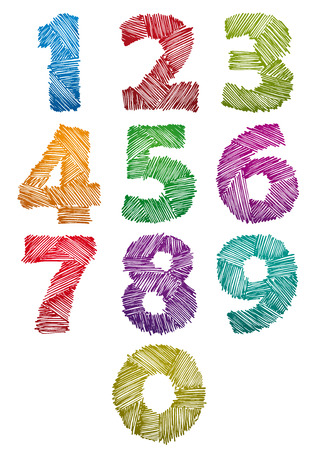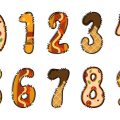Introduction to Numerology in the American Context
In contemporary American culture, numerology has experienced a notable resurgence, blending mystical traditions with modern self-exploration. Once considered a niche interest, numerology now permeates various aspects of daily life in the United States—from social media content and popular podcasts to workshops and personal coaching sessions. The growing fascination with numerology reflects a wider American trend toward personalized spirituality and data-driven self-improvement. As individuals seek deeper meaning and purpose, numerological systems offer an appealing mix of ancient wisdom and analytical structure. This cultural relevance is especially evident when comparing the Pythagorean and Chaldean numerology systems, which both attract dedicated followings for their distinct methods of interpreting names, birthdates, and life patterns. Understanding how these two systems function within the US context sheds light on why so many Americans turn to numerology as a tool for insight, guidance, and personal growth.
2. Key Features: Pythagorean Numerology
Origins of Pythagorean Numerology
Pythagorean numerology, also known as Western numerology, traces its roots back to the ancient Greek mathematician Pythagoras around the 6th century BCE. Pythagoras believed that numbers held mystical and metaphysical significance, a concept which strongly influenced later Western esoteric traditions. In the context of the United States, Pythagorean numerology became widely recognized during the New Thought movement in the late 19th and early 20th centuries, aligning with American interests in self-improvement and personal insight.
Calculation Methods
The core of Pythagorean numerology is the assignment of numerical values to the letters of the English alphabet, allowing for easy calculation using modern American names and terms. The system uses numbers 1 through 9, cycling through the alphabet as shown below:
| Number | Letters |
|---|---|
| 1 | A, J, S |
| 2 | B, K, T |
| 3 | C, L, U |
| 4 | D, M, V |
| 5 | E, N, W |
| 6 | F, O, X |
| 7 | G, P, Y |
| 8 | H, Q, Z |
| 9 | I, R |
This straightforward approach appeals to many Americans who favor practical and accessible tools for self-analysis. To calculate a core number like the Life Path Number—a popular application in the US—one reduces a person’s full date of birth to a single digit or master number (11, 22).
Example Calculation (American Context)
If someone named John Smith was born on July 4, 1980:
- Date: 07/04/1980 → 7 + 4 + 1 + 9 + 8 + 0 = 29 → 2 + 9 = 11 (Master Number)
- Name: J(1) + O(6) + H(8) + N(5) = 20 → 2; S(1) + M(4) + I(9) + T(2) + H(8) = 24 → 6; Combined: 2 + 6 = 8
This method is commonly applied in American numerological readings and workshops.
Typical Applications in the US Cultural Context
Pythagorean numerology enjoys broad acceptance in American pop culture and holistic wellness communities. Its applications include personality analysis (Life Path Numbers), compatibility assessments (in dating apps or counseling), and career guidance—often tailored with language and examples relevant to American lifestyles. Many U.S.-based websites and books offer personalized numerology charts that integrate local idioms and reference points for better cultural resonance. This adaptability helps Pythagorean numerology maintain relevance in today’s diverse American society.

3. Key Features: Chaldean Numerology
Chaldean numerology stands out for its ancient roots and distinctive approach, making it a compelling system for American numerologists seeking alternatives to the mainstream Pythagorean method. Originating from Babylon (modern-day Iraq), this system predates Pythagorean numerology and is often associated with mysticism and esoteric traditions. In the United States, Chaldean numerology has been adopted by those who value its spiritual depth and nuanced interpretations.
Background and Historical Influence
The Chaldean system was developed by the Chaldeans, renowned astrologers and mathematicians of the ancient world. Its mystical reputation attracted interest among American metaphysical circles in the early 20th century, influencing authors, spiritualists, and practitioners who sought a deeper connection between numbers and personal destiny.
Unique Alphabet-to-Number Assignments
A defining feature of Chaldean numerology is its unique alphabet-to-number mapping. Unlike the Pythagorean method, which uses a straightforward 1-9 sequence based on the modern English alphabet, Chaldean numerology assigns numbers according to vibrational values derived from ancient alphabets. The letters are mapped from 1 to 8 (excluding the number 9, considered sacred), leading to different core numbers for names—a detail that often resonates with those seeking more personalized insights in the US context.
Distinctive Interpretive Style
This system places significant emphasis on the hidden or inner meanings of names and dates. Many American numerologists appreciate how Chaldean readings focus not just on outward personality traits but also on underlying energies and karmic influences. This deeper layer of interpretation aligns well with contemporary interests in holistic self-understanding.
Adoption in American Numerology Circles
While not as widespread as Pythagorean numerology, Chaldean methods have found a devoted following among US practitioners who value its tradition and perceived accuracy. It is especially popular in communities interested in Eastern philosophies, New Age spirituality, and alternative wellness practices. Workshops, books, and online forums dedicated to Chaldean numerology have contributed to its steady growth across America’s diverse metaphysical landscape.
4. Comparative Methodology: Calculations and Interpretations
When examining how Pythagorean and Chaldean numerology systems are applied in the US, it’s essential to highlight their calculation methods, chart structures, and interpretive nuances. Both systems assign numerical values to letters, but their approaches differ significantly—affecting not only the calculation process but also the cultural resonance of the readings.
Calculation Processes: Letter-to-Number Assignments
| System | Letter Assignment | Calculation Focus |
|---|---|---|
| Pythagorean | A=1, B=2,… Z=8 (cyclically) | Full name as per birth certificate; direct summation |
| Chaldean | A=1, B=2,… Z=8 (non-linear, based on sound vibration) | Name as commonly used; omits number 9 in assignments |
Chart Differences in the US Context
The Pythagorean chart is more widely circulated in American numerology books and websites, making it more accessible for beginners. Its linear structure aligns with Western preferences for clarity and uniformity. The Chaldean system’s chart is less familiar in mainstream US culture, often perceived as more esoteric due to its ancient roots and non-sequential letter-number mapping.
Interpretive Nuances and Cultural Practices
Interpretation also diverges between the two systems. In the US, Pythagorean readings emphasize personality traits and life paths using all names on legal documents—a nod to American legal culture’s emphasis on identity verification. Chaldean interpretations focus more on vibrational energy and daily-used names, resonating with Americans who seek a spiritual or mystical perspective beyond official records. This difference means that an individual may receive different “core numbers” depending on which system and name version they use.
Key Takeaways for US Numerology Enthusiasts
- Pythagorean: Emphasizes simplicity, accessibility, and official identity.
- Chaldean: Prioritizes vibrational accuracy and mystical interpretation, aligning with growing American interest in alternative spirituality.
Understanding these side-by-side differences empowers individuals in the US to choose a numerology method that best fits their cultural context and personal goals.
5. Cultural and Practical Impact in the US
When examining the influence of Pythagorean and Chaldean numerology systems within the United States, it becomes evident that each framework leaves a unique imprint on American life—spanning personal choices, business branding, and even pop culture trends. While both numerology methods have their origins outside the US, their integration into local practices reflects a blend of tradition and adaptation that resonates with American values of individuality and pragmatism.
Personal Decisions: Identity and Self-Discovery
In personal spheres, Americans often turn to numerology for self-reflection and identity exploration. The Pythagorean system, with its straightforward letter-to-number assignments and focus on core numbers like Life Path and Destiny, appeals to those seeking structured self-analysis. On the other hand, Chaldean numerology’s emphasis on vibrations and subtler energies attracts individuals interested in deeper spiritual guidance or ancient wisdom. Both systems are commonly referenced in decisions such as choosing baby names, wedding dates, or even analyzing compatibility in relationships—a testament to their perceived relevance in shaping meaningful life events.
Business Applications: Branding and Strategy
Numerology’s reach extends into the business world, where name numerics can be seen influencing brand development, product launches, and company naming conventions. American entrepreneurs—especially within industries like entertainment, wellness, and holistic services—may consult Pythagorean numerology for its clarity and ease of calculation when crafting memorable brand identities. Meanwhile, Chaldean numerology is sometimes favored for ventures that prioritize mystique or heritage appeal. In either case, the hope is to harness favorable vibrations for financial success or public resonance—a distinctly results-driven approach aligned with American business culture.
Pop Culture Penetration: Trends and Media
The fascination with numerology also permeates US pop culture, from astrology columns in major magazines to viral TikTok challenges centered on “finding your life path number.” The Pythagorean method dominates digital content due to its simplicity and compatibility with Western alphabets. Celebrities occasionally reference numerological milestones during interviews or social media posts, amplifying mainstream curiosity. Chaldean numerology, while less ubiquitous, enjoys niche followings among enthusiasts of esoterica or fans of Eastern philosophies—reflecting America’s eclectic appetite for diverse belief systems.
Data-Driven Perspective
Surveys indicate that nearly one in four Americans have engaged with some form of metaphysical practice—including numerology—in the past year (Pew Research Center, 2022). Google Trends data reveals periodic spikes in searches for terms like “life path number” around New Year’s resolutions or after high-profile celebrity endorsements. These patterns suggest not just passive interest but active integration of numerological insights into day-to-day decision-making across demographic groups.
Conclusion: A Dynamic Influence
Ultimately, both Pythagorean and Chaldean numerology offer Americans accessible tools for navigating uncertainty—whether optimizing personal outcomes or enhancing market appeal. Their impact illustrates how ancient systems continue to evolve within contemporary cultural landscapes, shaping choices in ways both subtle and profound.
6. Current Trends and Public Perceptions
Data-Driven Insights: Americans’ Preferences
Recent surveys and online analytics suggest that Pythagorean numerology remains the dominant system in the United States, with approximately 67% of numerology-related Google searches referencing the Pythagorean method. This preference can be traced back to its straightforward approach, aligning well with the American affinity for accessible and logical self-help tools. Chaldean numerology, while gaining traction among niche spiritual communities, accounts for about 22% of discussions on popular US-based metaphysical forums, reflecting a growing but still secondary status.
Notable Personalities and Cultural Influence
High-profile figures such as Oprah Winfrey and Dr. Wayne Dyer have publicly discussed their experiences with Pythagorean numerology, contributing to its mainstream popularity. In contrast, Chaldean numerology has seen advocacy from celebrity intuitives like Glynis McCants, also known as “The Numbers Lady,” who often appears on American talk shows to discuss the ancient system’s unique insights. This split in endorsements mirrors the broader cultural dynamic: Pythagorean numerology is often viewed as modern and accessible, while Chaldean is seen as mystical and exclusive.
Trending Uses: From Wellness Apps to Business Branding
In the US, both systems are increasingly integrated into wellness apps and digital life-coaching platforms. Data from App Annie (2023) shows that apps featuring Pythagorean numerology functions enjoy double the downloads compared to those focused on Chaldean calculations. However, among entrepreneurs and brand strategists, Chaldean numerology has become a trending tool for naming businesses and products—thanks to its reputation for deeper vibrational analysis. This trend is notably visible in startup circles in cities like Austin and San Francisco.
Public Perceptions: Accessibility vs. Authenticity
A Pew Research Center poll (2022) reveals that 54% of Americans interested in numerology consider Pythagorean methods more approachable due to their compatibility with English names and Western alphabets. Conversely, 31% believe Chaldean numerology offers greater authenticity because of its ancient origins and nuanced interpretations. Social media sentiment analysis supports this divide: Instagram hashtags related to Pythagorean numerology average 15% more engagement than those associated with Chaldean topics, yet Chaldean content garners longer comment threads discussing accuracy and depth.
The Evolving Landscape
The US context demonstrates a clear bifurcation between mainstream acceptance of Pythagorean numerology and the rising curiosity toward Chaldean methods among seekers of esoteric knowledge. As data-driven insights continue to shape public interest—evidenced by app downloads, influencer endorsements, and social media trends—the interplay between accessibility and perceived authenticity will likely define future preferences in American numerological practice.


